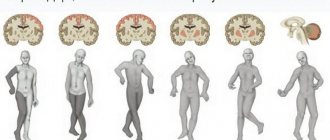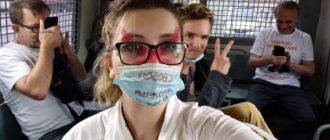If you think that someone is watching you through your computer, there is no need to worry about it. Just check who has access to the webcam, keyboard and other devices. And, if suspicions are confirmed, solve this problem.
In the 21st century, the feeling of being spied on has intensified. If earlier people were afraid of neighbors with binoculars, vans near the fence and looked for wiretapping in their phones, now surveillance can be carried out directly through a PC.
Of course, detecting spyware and viruses is not very difficult. It is enough to pay attention to the list of installed applications, battery charge, blinking indicators and other details. Experts also advise paying attention to the webcam: if the light comes on (at least for a second), it means you are being filmed.
But in reality, noticing that the camera is working is not so easy. Firstly, the indicator may simply burn out. And secondly, sometimes the webcam films with the diode turned off. It all depends on the operation of a particular camera, and sometimes the light can be turned off by software.
Read on Medialeaks A good boy changes his profession. How did a Shiba Inu start working in Data Science?
For example, in 2013, researchers from Johns Hopkins University found that it is possible to turn off the webcam indicator on a MacBook and shoot video without the user's knowledge - and this is done even through an application without root rights (administrator rights).
Back then we were talking about older laptop models, but it’s worth considering that new devices may have their own vulnerabilities. Fortunately, you can check who is using your webcam or, for example, reading everything you type on the keyboard, without looking at the indicator lights.
Stalking on social networks
Stalking most often begins quite harmlessly: the stalker (stalker) is often the girl’s ex-boyfriend or just an acquaintance who moves in the same circle as her, hangs out on the victim’s page, likes her photo, writes compliments in the comments, asks to be added as a friend, and actively follows her entire life via the Internet. However, gradually the stalker becomes more and more intrusive, and his messages become more and more frank, vulgar and inappropriate. He begins to actively write personal messages to the girl, demands a meeting in reality or “at least” new photographs taken especially for him, and reacts extremely aggressively to refusal and quickly moves on to dirty insults. Such “communication” ends with the girl blocking the pursuer and hoping that now she will not have to endure his rudeness. But most often the stalker doesn’t stop there...
Having lost access to his victim on a social network, the stalker begins to look for an opportunity to bring her back under his influence, scare her, cause fear and remind her of himself in any way. They use false pages, messages to friends, as well as continued collection of any information about the girl. It costs nothing for a stalker to pretend to be a handsome guy he doesn’t know and offer the victim a virtual acquaintance, during which he will trick her into going to a meeting, where he will try to force her to date him with threats and pressure. Or maybe they can fake the page of a relative or close friend of the girl in order to lure out her phone number.
"Gloomy guys"
However, there are situations when “it would be better if it were outdoors.” If three men follow you in the same deserted park, this is clearly a different situation. But how not to confuse a “stomper” with a killer or bandit?
“The face of the “stomper” should be forgettable, inconspicuous. “Toptuny” are not gloomy two-meter guys with a square jaw and a heavy gaze, says Nikolai Tyuneev. “In addition, since the observers do not capture or neutralize anyone personally, leaving this to their colleagues, they will not rush towards you.”
At the same time, it is quite difficult to understand by the eyes that a professional is following you. “A professional will try not to make eye contact with the object (this is an unmasking sign; contact leads to memorization of the face) and will never walk with a brick face - on the contrary. If you turn around, and behind you is a menacing-looking person who is looking at you point-blank and doesn’t even try to behave secretly (unlike in an outdoor situation), this is definitely a different story,” says the expert.
So, schematically, a “stomper” is a person who repeats the route of the object, can change his appearance, is collected, tries to avoid direct visual (and generally any) contact with the object, tries to get lost in the crowd. However, if some big guy is drinking on the playground, and an unknown grandmother is talking to someone through a microphone in her collar, they are not necessarily “coming for you.” Moreover, in modern realities, a bull with beer in a sandbox, alas, is not uncommon, and it looks quite harmonious.
The best way to detect external surveillance of yourself is to be extremely attentive, try to catch the discrepancy between people’s behavior and appearance and the surrounding context. “If you are sure that there is a “tail” behind you, a good way would be to change your appearance as much as possible (clothes, glasses, wig) and get rid of any means of communication. But the tricks with “left” SIM cards, unfortunately or fortunately, no longer work at present,” concluded Nikolai Tyuneev.
"Bum with a cart"
As for wigs, dressing up as a “grandfather” following the example of the famous detective Sherlock Holmes, or, for example, as a homeless person, this is practiced, but within reason. By the way, the theme of the homeless – if you believe Western cinema – is very popular in operas there. To get close to a target—a drug lord, for example, or any other suspect—the operative pretends to be homeless, hides his face under a hood, and walks with a cart full of bottles, scraps and trash straight to the suspect's lair. Like, “passed by.” But here, according to the laws of the genre, strong dark guys with weapons stop him and strongly advise him to go beg to hell. At this moment, the “homeless man” pulls out a weapon and shouts “police” - which, according to the MIR 24 expert, is already a gross mistake. Apart from the fact that approaching an object at a close distance is simply unprofessional.
“However, it’s worth making a reservation: one should distinguish between a “stomper,” whose goal is to collect information, and a regular oper, the goal of which may be to approach an object as close as possible to detain it. This is where “snatching a pistol” from under the clothes of a tramp or a janitor will do,” explains the expert.
But at the same time, it is important to understand that real life and the real activities of law enforcement agencies are one thing, and cinema is another.
“In movies, many moments are embellished for entertainment purposes. But regarding dressing up and changing appearance - yes, such techniques are indeed used. People who carry out surveillance can change both appearance and clothing. Such an observer can be unmasked (revealed) by the lower part of his clothing. Changing a jacket, wig or glasses on the street, “in the field” is not difficult, but trousers, a skirt (and women do this too), shoes are much more difficult,” explains the expert.
So if you notice the same person following you, and even in different clothes, this is a reason to tense up. But people (like machines) will also change - observers work as a group. Changing not only the appearance, but also people and machines is the main point of this work. If professionals are working, there is, to put it mildly, very little chance of identifying them.
The observer must blend in with the surrounding area, with the crowd. But if it happens that the object of observation enters a deserted area, according to the rules, you need to leave it unattended for a while, so as not to loom with it on the same “penny”, and cut off waste from this location. “Block off - not in the sense that the object will not be physically allowed to leave this area, but in the sense of monitoring the exits from there. But professionals will not give themselves away and will not follow the subject to a place where he will easily notice them. As a rule, not one person works, but a group; they will block the exits and continue surveillance of the object where possible,” explains the MIR 24 interlocutor.
So the “object” - the person who came under surveillance - can be advised to choose places with a moderate crowd of people, not a crowded crowd, where even a professional cannot detect the “outdoors”, but also not deserted gateways.
A culture of helping is important
It is not so difficult to notice an elderly “lost” person with dementia on the street: he may be dressed completely inappropriate for the weather, wearing slippers and a robe. If a lost-looking elderly person asks for help, dial 112 and stay with him until the police arrive. Ideally, you need to take a photograph of the person, record who took him and where, and inform the search and rescue team.
If an elderly person asks you to buy him a transport ticket, then do not rush to pay for the trip. Unfortunately, notes Anna Shipilova, head of the psychology department at Lisa Alert, an elderly person with dementia who finds himself on the street does not always understand that he needs help.
Photo: TASS/Artem Geodakyan
— Most often, people with dementia do not accept help because they know exactly where they are going and what they need. The only help they can accept is if they are offered help to return home. But, unfortunately, we encounter situations where a person is paid for travel or given a lift by car to a point that the person himself names, but it turns out that he has not lived there for many, many years,” says Anna Shipilova, noting that It is important to create a culture of helping disoriented people.
Act immediately
If a person has already disappeared, do not wait, ring the bells - the police are obliged to accept your statement immediately. It is recommended to be persistent when communicating with law enforcement officers: in Moscow, almost every house, every entrance has cameras, and police have access to the recordings.
Be sure to contact the Lisa Alert team, where they will give you an orientation, a table of hospitals to call, and tell you how to search correctly.
Members of the Lisa Alert search and rescue team
Photo: TASS/Artem Geodakyan
If the grandfather literally just left, explore the area, check houses and entrances, especially those that are very similar in appearance to those where the missing loved one lives. You’ll have to remember the past: where you liked to walk, where you used to live (even if it’s a different city), work address, habits. Ask yourself questions and remember. Where have you wanted to visit lately? What places have you mentioned recently? Maybe you didn’t let a person into the forest, but he is an avid mushroom picker. You need to look on those routes along which a person has moved for many years: to work, to his childhood home, where he moved from, and so on.
Guardian drone: artificial intelligence will help find missing people
Cellular operators are testing new technologies for search and rescue operations
Don't forget about the power of social networks: post a photo of your grandmother or grandfather, ask for attention, because you never know who might see this post and help.
Photo for memory
Is it possible to prevent a person with dementia from leaving home? This is difficult because it is impossible to control a person 24 hours a day, seven days a week. But you can help reduce your search as much as possible. The website memini.ru, dedicated to the problems of dementia, gives some advice.
First, neighbors should know that someone close to you has memory problems. Don't be shy about giving out your number and asking your neighbors to call if they notice your dad, mom, grandma or grandpa walking somewhere alone. If you live separately, then call your elderly relatives with dementia or neighbors every day, since often a search application is received only after two or three days - precious time is lost. If you cannot visit your loved one yourself, again ask your neighbors to stop by: you should know every day where the person is and how he feels.
Buy and convince an elderly person to carry a mobile phone (the simplest, most convenient model). Add emergency phone numbers and family numbers to your Favorites. Even if a person responds to it infrequently, there is hope of receiving movement data. Register a SIM card in your name and enable the function of receiving geolocation from your mobile operator. You can also purchase a tracker that will help you track your movements using GPS.
Photo: TASS/Elena Afonina
You can put notes with your phone number, name in your pockets, and also sew tags with your phone number and your name, full name. grandmothers or grandfathers for clothes - not only for outerwear, but also for underwear.
Cell membranes will help defeat Alzheimer's and Parkinson's diseases
Russian experts have figured out exactly how important structures of a living organism are destroyed
Kilometers pass in oblivion
“In the next 30 years, the number of people with dementia will almost triple”
WHO Coordinator Manfred Huber talks about ways to combat aging, prevent Alzheimer's disease and European experience in caring for the elderly
In June, 76-year-old Lyudmila Georgievna disappeared in the Kaluga region. A month ago she already left home. Then the volunteers returned the woman home, and then history repeated itself again: she left into the night in an unknown direction. As volunteers in the community of the Kaluga branch of the Lisa Alert search and rescue team said, they immediately rushed to interview the grandmother’s son, contacted the police, ambulance, began calling hospitals, while at the same time drawing up guidelines for posting on the Internet.
Suddenly a call from a young man named Anton: he met a confused grandmother in a garage cooperative, who refused help and left. After some time, the neighbor in the garage screamed and swore at the entire cooperative: the grandmother locked herself in his car and flatly refused to get out of it. Looking at this, Anton found the Lisa Alert page on the social network and dialed the information number. As it turned out, this was the missing Lyudmila Georgievna. Everything ended well. It turned out that since the moment of her disappearance, the grandmother, half-forgotten, had walked an incredible distance of 21 km and was very tired.
Photo: Depositphotos
Dementia, senile insanity, loss of the ability to think, remember, recognize objects - you can’t call it dementia, but it doesn’t make life easier for either older people or their loved ones. According to WHO, there are over 50 million people in the world suffering from dementia, in Russia these figures are around 2 million. Moreover, according to the forecasts of the same World Health Organization, by 2030 over 80 million people around the world will suffer from dementia.
Life without memory: in Russia there are about 2 million elderly people with Alzheimer's disease
Only one in ten such patients comes to the attention of doctors
Who's missing? People who went for a walk got lost and can no longer find their way back. Those who wake up in the middle of the night and, not recognizing their home, go outside and get lost. They can walk tens of kilometers. Someone leaves for another city or ends up in the hospital. Some of them die in hospitals as unknown persons.
- About half of the people we look for are people with such changes. This is a problem that the state does not see, that society does not see,” Grigory Sergeev, a member of the Public Chamber of the Russian Federation, chairman of the Lisa Alert search and rescue team, told Izvestia. — In reality, a huge number of citizens aged 75+ have some kind of memory problems. And it will be good if there are systemic solutions.
One of the really working projects, according to Grigory Sergeev, is the joint work of the search and rescue team and the “Safety Island” business. This is about 40 thousand points (for example, a chain store), where the staff knows exactly how to help a lost person with dementia and where to call.
“During the year of operation of the Safety Island, about 600 people returned home, and in many cases even before relatives realized that something had happened,” says Grigory Sergeev. “Several dozen cases turned out to be purely life-saving when people were feeling unwell, but thanks to competent actions we managed to help on time.
Members of the Lisa Alert search and rescue team
Photo: TASS/Alena Kardash
According to the chairman of Lisa Alert, about 30% of the people who are now being looked for (about 100 people daily) have already passed through medical institutions, but they cannot be detected because there is no federal database of such patients.
- This is an important thing. There is even a presidential instruction on this matter, which, I hope, will turn into a federal base,” says Grigory Sergeev.
Nicotine receptor: protein drops will help against Alzheimer's disease
Scientists are developing a unique drug that can slow down the development of dementia
About stereotypes in society and ways to protect yourself from stalking
Elena Bolyubakh advised the game developers on the psychology of the characters’ behavior so that their actions corresponded to reality. She told 7x7 that victims of stalking often do not seek help or do it too late. Due to stereotypes in society, both men and women sometimes mistake stalking for courtship:
— For example, a girl and a young man met and went on a date, after which the girl decides that she does not want the relationship to develop, and tells or writes to him about it. But he doesn’t understand this and continues to follow her, call, write. From the experience of the crisis center, I can say that the girls who come to us say: “I’ve never told him “no,” but it still seems to him that I’m just encouraging him.” Our conventional cultural norms and stereotypes play a role here, let’s say, “a man should pursue a woman.”
There was a similar situation in Russia with domestic violence:
— We have been “breaking” the stereotype for a very long time that domestic violence only occurs when, conditionally, the ribs have already been broken. In fact, violence begins with a word; no one ever hits anyone right away. It’s the same with stalking, it comes in different forms.
“Do you have a cigarette?”
“Stomper” can be forced to play by your own rules - suddenly stop this person (if you suspect that this is an observer) and turn to him with a question. And not from the series “Do you have a smoke?”, “What if I find it?”, while threatening to “split your finger” (this will make it clear that the entire operation has been revealed, and the observer has been “copied”), but, for example, “how to get to the museum” . A brutal attack by a “stomper” (questions about “lighting a cigarette”, “what is necessary”, etc.) will lead to the opposite effect: even more organized and planned surveillance. Or bewilderment, if it’s someone completely stranger.
But trying, in professional terms, to provoke the observer to reveal himself with a polite question in order to find out whether this is surveillance or not, is quite possible. “Next you need to look at his reaction - stress will definitely manifest itself in external signs. If this is a random passer-by, he will indifferently point the way to the museum, but if this is an “outdoor” event, the observer may be given away by vegetative manifestations. “Toptun” does not expect the subject to come up to him and start asking something, and may get confused,” explains the MIR 24 interlocutor.
But it is impossible to provoke the observer to reveal himself by running away. A professional, seeing that the subject has quickened his pace or ran, understands that he has been “copied,” stops observing and transfers him to another “stomper,” says Nikolai Tyuneev. But it will not run after the object. And if he runs, it means that, again, this is not “outdoor surveillance”, but some other story. The task of a professional is to attract as little attention as possible, to be as natural as possible and not to succumb to provocations from the subject.
But it is worth remembering that a professional cannot be noticed in principle.
“If - as in the case of the photographer - it was really surveillance, and the subject revealed the observer with a sharp brake, forcing him to move forward, with a fixed gaze, making it clear that the observation was detected, then this, on the part of the supposed observer, would be a typical mistake novice operatives. They try to be as close as possible to the object of observation, and, at the same time, remain unnoticed,” says the expert.
The “competent” distance between the observer and the object depends on the location, personal characteristics of the object, the reasons that served as the basis for the observation, and the agency that carries out the event. Information on this matter is considered confidential.
Don't underestimate the risk
It would be a good idea to periodically check whether your loved one remembers their first name, last name, and address, although this is not a panacea. Psychiatrist, vice-president of the Altsrus Foundation for helping people with dementia and their families, Maria Gantman notes that relatives should not underestimate the risk of losing their loved one.
— How do they usually reason? “If a person leaves home, he will be able to say his name. I ask him for the address - he remembers it perfectly.” Firstly, people do not take into account that within a few hours after wandering aimlessly along the street (in the cold, in the heat, without food, without water), a person will not be able to tell either his address or his name, says the expert. “When people with dementia get scared or anxious, they forget even what they remembered at home.
Maria Gantman notes that no technology will work if relatives are not wary: “The same parts of the brain are responsible for memory and spatial orientation. If a person doesn’t remember well what he was told and asks again many times, he already has an increased risk of getting lost, and something needs to be done: install the “Search Center” application, hang tags, iron-on stickers on clothes.”
Members of the Lisa Alert search and rescue team
Photo: TASS/Artem Geodakyan
Take frequent photographs of loved ones with dementia. The photographs will not only remain as a lasting memory, but will also help in the search: after all, it is much easier to search for an 80-year-old person using a recent photograph than using a passport photo where he is 45 years old.
According to Grigory Sergeev, there is no single recipe: the phone can run out, just like a GPS bracelet, but it is important to use all the possibilities for rescue and detection. Maria Gantman suggests another life hack for finding a lost person.
Alzheimer's disease can be slowed down
Scientists are closer to understanding the nature and treatment of dementia
— Unidentified people who end up in hospitals are checked to see if their fingerprints are in the police database. But if a person has lived his entire life and has not committed any offenses or changed his citizenship, then, naturally, his fingerprints are not in the database,” says the expert. “But you can come to the police station and, after paying a small fee, get a service such as entering fingerprints into a database.










